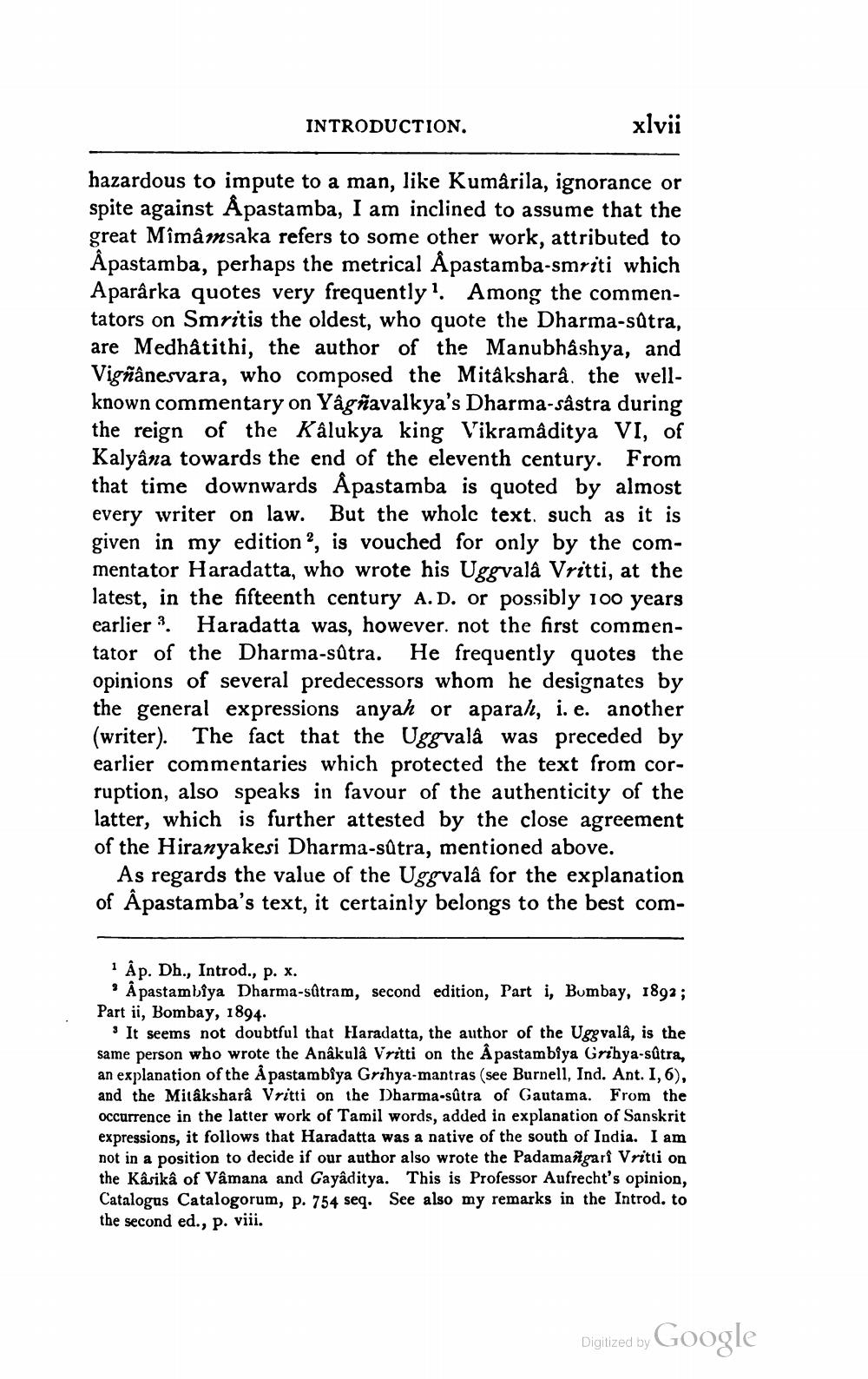________________
INTRODUCTION.
xlvii
hazardous to impute to a man, like Kumârila, ignorance or spite against Åpastamba, I am inclined to assume that the great Mîmâmsaka refers to some other work, attributed to Åpastamba, perhaps the metrical Åpastamba-smriti which Aparârka quotes very frequently?. Among the commentators on Smritis the oldest, who quote the Dharma-sútra, are Medhâtithi, the author of the Manubhâshya, and Vigñânesvara, who composed the Mitâksharâ. the wellknown commentary on Yâgñavalkya's Dharma-sâstra during the reign of the Kalukya king Vikramaditya VI, of Kalyana towards the end of the eleventh century. From that time downwards Åpastamba is quoted by almost every writer on law. But the whole text. such as it is given in my edition?, is vouched for only by the commentator Haradatta, who wrote his Uggvalâ Vritti, at the latest, in the fifteenth century A. D. or possibly 100 years earlier ? Haradatta was, however. not the first commentator of the Dharma-sútra. He frequently quotes the opinions of several predecessors whom he designates by the general expressions anyah or aparah, i. e. another (writer). The fact that the Uggvala was preceded by earlier commentaries which protected the text from corruption, also speaks in favour of the authenticity of the latter, which is further attested by the close agreement of the Hiranyakesi Dharma-sútra, mentioned above.
As regards the value of the Uggvalâ for the explanation of Apastamba's text, it certainly belongs to the best com
1 Åp. Dh., Introd., p. x.
A pastambiya Dharma-sâtram, second edition, Parti, Bumbay, 1892; Part ii, Bombay, 1894.
* It seems not doubtful that Haradatta, the author of the Ugg valâ, is the same person who wrote the Anâkulâ Vritti on the  pastambiya Griya-sútra, an explanation of the A pastambiya Grihya-mantras (see Burnell, Ind. Ant. I, 6), and the Mitakshara Vritti on the Dharma-sútra of Gautama. From the occurrence in the latter work of Tamil words, added in explanation of Sanskrit expressions, it follows that Haradatta was a native of the south of India. I am not in a position to decide if our author also wrote the Padamañgari Vritti on the Kasikâ of Vâmana and Gayâditya. This is Professor Aufrecht's opinion, Catalogus Catalogorum, p. 754 seq. See also my remarks in the Introd. to the second ed., p. viii.
Digitized by Google




